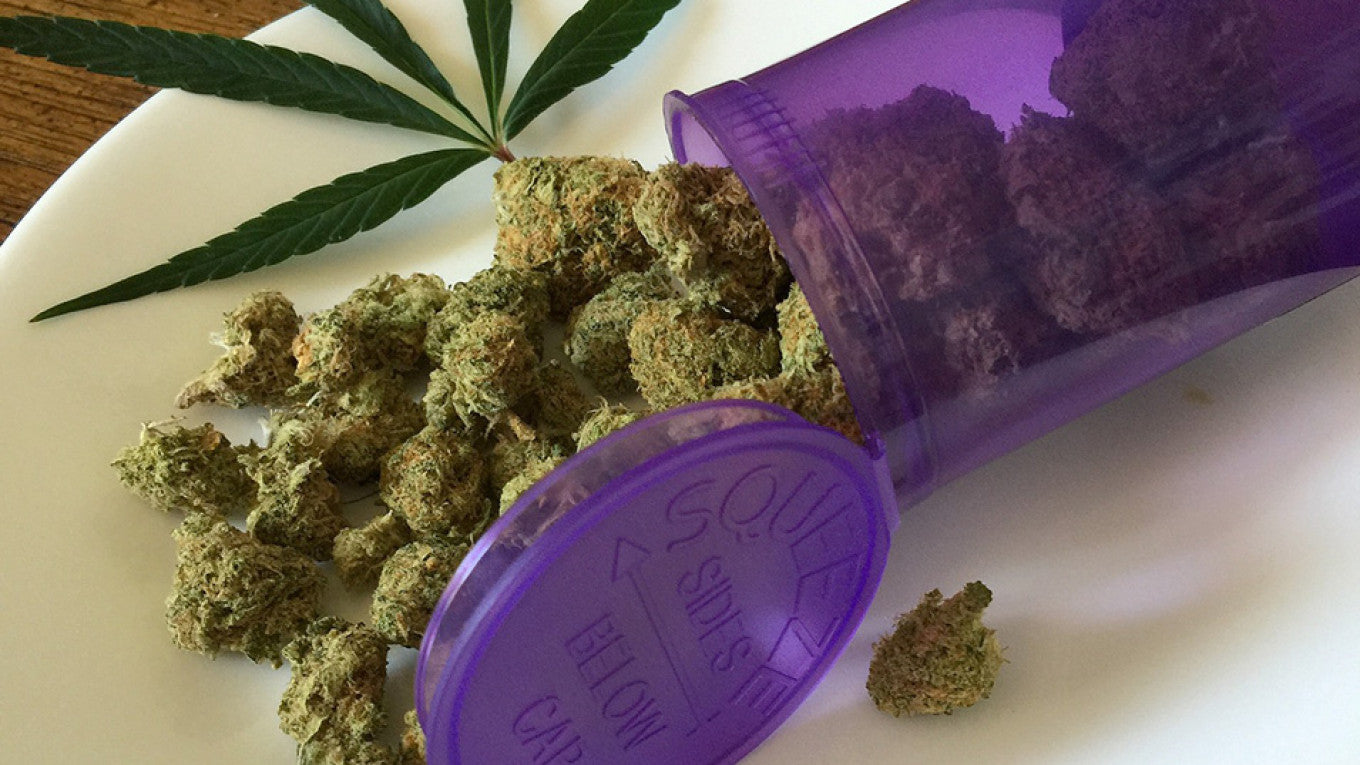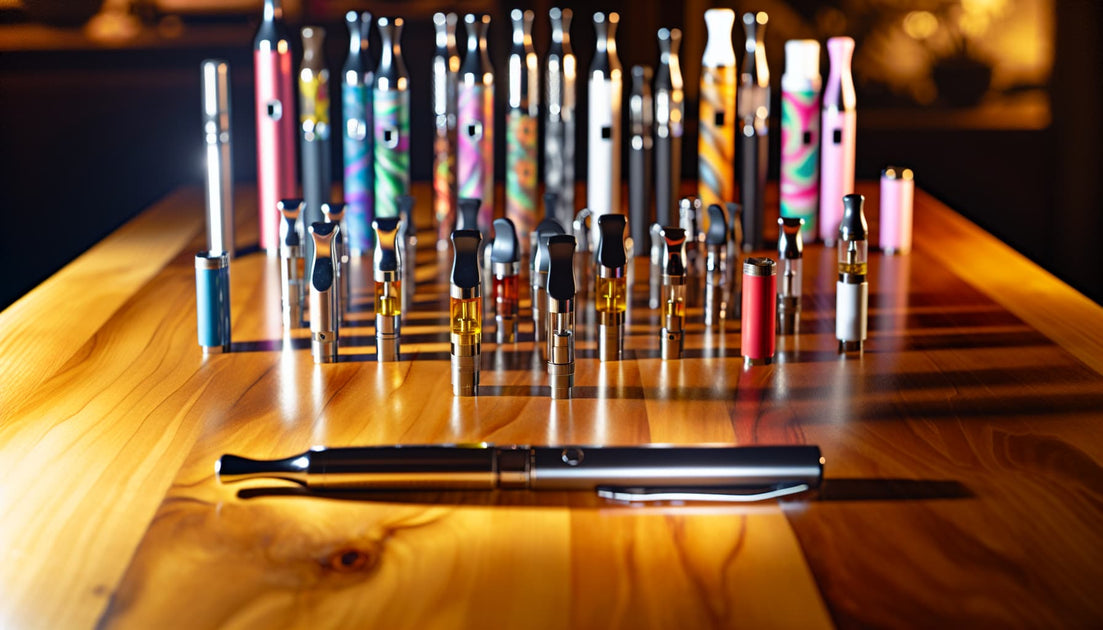Your cart is currently empty.

Marijuana has never been more popular or more accessible than it is today. Depending on where you live, you might even be able to buy it as easily as you would groceries. It comes in a practically endless variety of forms, from classic raw flower to concentrates for dabbing - there are even CBD pet treats for your fluffy companions!
Despite its current popularity and generally “socially acceptable” status, marijuana has a bit of a jaded past. It was illegal practically everywhere for decades, and has received no less than its fair share of propaganda and fear mongering. Although it’s generally understood much more clearly nowadays, this hasn’t completely undone the harm that years of propaganda has caused.

One of these unfortunate misunderstandings is the notion that marijuana is a “bad drug.” Some even believe it falls into the same category as things like methamphetamine and heroin; the US government even spreads this misinformation further by categorizing marijuana the same as heroin. We’re going to clear up this horrible misinformation and talk about why marijuana is classified as a drug, why it’s not the same as many other drugs, and what exactly it can be categorized as within the various types of drugs.
What you’ll learn in this article:
- What are the main types of drugs?
- Is marijuana a drug?
- What sort of drug is marijuana?
What are drugs anyway?
To be very, very literal about it, a drug is “a medicine or other substance which has a physiological effect when ingested or otherwise introduced into the body.” That is to say, drugs will affect the mind and/or body when taken, and their potential effects are practically countless. So if anything that has this sort of effect on the body is considered a drug, it makes sense that things like cocaine, ecstasy, and alcohol are all considered drugs.

Four main types of drugs
Drugs can generally be classified into one of four main categories. Each of these categories is defined by shared characteristics presented when taking drugs in that category. These lines are not completely hard-and-fast, and they allow for some gray area with different drugs.
Depressants
Depressants are a group of drugs that may slow your brain function and central nervous system. This can be a positive thing when it comes to curing anxiety, insomnia, and even muscle spasms (you can also try CBD for help with all of these problems and more). However, depressants may also come with negative side effects such as slowed breathing, speech impairment, nausea, dizziness, and short-term memory loss. Depressants include things such as alcohol, Xanax, and benzodiazepines (more commonly called “benzos”).
Stimulants
Stimulants are basically the opposite of depressants. These drugs may elevate your mood and increase your attention span while doing so. As with all drugs, they don’t come without their downsides. The most notable negative side effects of stimulants are increased heart rate and blood pressure, rapid or shallow breathing, irregular heartbeat, and anxiety. Stimulants are drugs like cocaine and methamphetamine (these are fairly “hard” examples - caffeine and nicotine are also technically stimulants).

Hallucinogens
Hallucinogens are psychoactive drugs, meaning they have hallucinogenic effects. These drugs, such as LSD and MDMA (more commonly referred to as Molly), alter our perception of reality. What we see on hallucinogens becomes distorted and our perception of time is altered. This is not to be confused with hallucination such as paranoia, which results from stimulants.
Opiates
Opiates are what you’ve heard referred to as pain killers. That’s pretty much exactly what they do - opiates offer an extremely powerful pain killing effect coupled with euphoria. Don’t misunderstand, though: these are extremely addictive and, thus, dangerous drugs. These include drugs such as heroin and morphine. Opiates are things like prescription painkillers, morphine, and heroin.

What makes weed a drug?
We’ve all heard the back-and-forth on marijuana and its drug status (or lack thereof). While there may be further debate on what exactly marijuana is, the experts pretty much stand united in saying yes, marijuana is indeed a drug. And why wouldn’t it be? It fits the definition perfectly; it is a substance that has a physiological effect when introduced to the body. However, the exact categorization of marijuana can be a bit tricky.
Where does weed fall in those categories?
First and foremost, let’s get one extremely important fact out of the way: marijuana is never categorized as an opiate (no matter its ridiculous classification for the sake of criminal indictment). It shares absolutely no properties with opiates whatsoever. But then what about the properties it does share with other drugs?

This is what makes weed hard to classify. The effects of marijuana span a huge range, and many people experience them differently. Marijuana use can mimic the effects of a depressant, a stimulant, and, to some degree, a hallucinogen.
When is marijuana a depressant?
Sometimes the effects of marijuana mimic a depressant. Depending on the patient and the amount they use, the central nervous system may be affected the same way as if they took a depressant; their muscles relax and their nerves are calmed. So in this sense, the effects of marijuana use may closely resemble those of a depressant.
However, marijuana comes without as many of the nasty side effects that can come from depressant use. It may cause some dizziness and short-term memory loss, but its long term effects on mental health aren’t as severe as normal depressant side effects. If you’re really after the calming, anxiety-relieving properties of cannabis, try packing a bowl of (completely legal) CBD flower into one of our favorite bongs, and you’ll find the relief you’re after in no time.

When is it a stimulant?
In other people (and with certain strains), the effects of marijuana may much more closely resemble those of a stimulant. Just like with stimulant use, marijuana can cause effects such as elevated mood and heightened focus. These effects are especially prevalent in many sativa-dominant strains.
Just as with stimulant use, however, this sort of stimulant effect can also cause paranoia, anxiety, and increased heart rate. Some people may experience this effect every time they use and marijuana, while others may only experience it with particular strains or when smoking to excess. Coupling it with the effects of a depressant is not advisable as a means of relief, as this can lead to further dizziness and excessive inebriation.
Is it really a hallucinogen, too?
To a much lesser degree than actual hallucinogens such as LSD and MDMA, yes, the effects of marijuana use can involve some hallucinatory components. Don’t expect it to be as powerful as a real hallucinogen; the hallucinogenic effects of mariuana are much more tame and usually involve the distortion of time and mild auditory hallucinations.

The negative side effect of hallucinogens on your nervous system involves some loss of motor control, as well as potential nausea and even dissociation. Long term, heavy use of any mind altering substance can result in these sorts of side effects. However, marijuana use has not shown to have nearly the detrimental results commonly associated with other drugs.
But it’s not an opiate, right?
Just to reiterate; marijuana is not, has never been, and never will be an opiate. Its criminal classification is not a reflection of the actual nature of the drug. That classification is, instead, a result of widespread slander and propaganda. While it may mimic a depressant, stimulant, or even a hallucinogen, it is in no way comparable to opiates.
Conclusion
While the jury may be out on classifying weed into one specific group of drugs, it’s clear that marijuana is a drug by definition. It just doesn’t come with all of the negative side effects of many pharmaceuticals and otherwise “harder” drugs. Even so, if you have any doubts about using marijuana (whether it’s for the first time or the thousandth time), it’s always wise to seek medical advice regarding your personal use of the drug.
If you want to know more about marijuana and its use, check out the following topics to further your understanding:
- Is cannabis use highly addictive?
- Does weed affect dopamine disorders?
- Can THC make depression symptoms lessen?
. Written by Megan Medeiros (BA)
Written by Megan Medeiros (BA)
Megan Medeiros has a bachelor’s degree in English and is currently working on a master’s in English at James Madison University. She's the owner and operator of Medeiros Writing, and has been working as a cannabis writer for the past three years, mostly following the legal climate of marijuana, especially in areas like California, Colorado, Oregon, Canada, and other legal areas.
This post contains references to products from one or more of our advertisers. We may receive compensation when you click on links to those products. For an explanation of our Advertising Policy, visit this page. All photos were sourced from Pinterest.com | updated 2021



